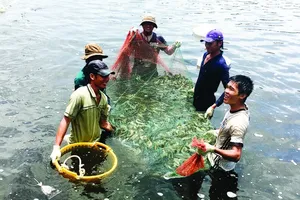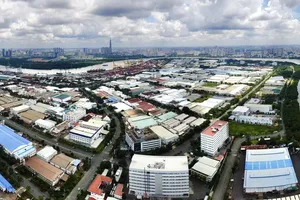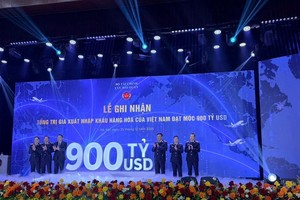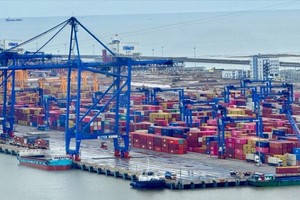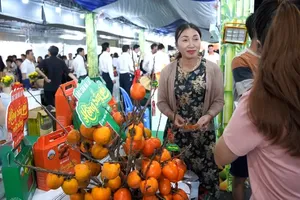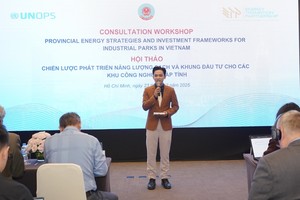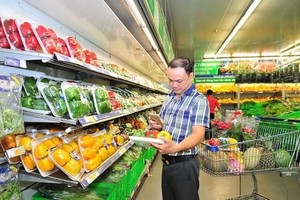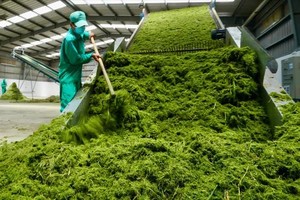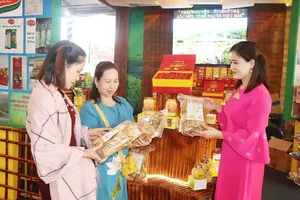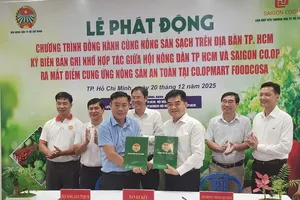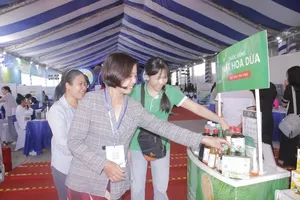Despite the recent sweltering weather, many residents living along the Hau and Tien rivers in the Mekong Delta are celebrating bumper fruit and vegetable crops and high selling prices. Meanwhile, severe droughts and seawater penetration have been plaguing other farmers in the central and southern regions.
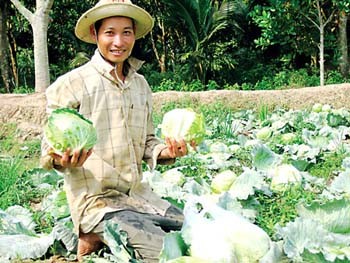
On a recent scorching afternoon, farmers in Binh Tan District of Vinh Long Province were still animated because of their successful harvests.
On his cabbage field in Tan Quoi Commune, farmer Phan Minh Chau walked merrily saying that although it was hot, he did not feel tired because his 1,000-hectare cabbage field has brought him a very high output of over 3 tons.
Looking out over his field of green, Chau said that cabbage is currently selling for VND6,000 a kilogram, and at this price, he would earn VND15 million after calculating input costs.
Another farmer named Nguyen Van Muc from the district’s Tan Binh Commune, said that after harvesting his winter-spring rice crop, he changed to cultivating 2,000 square meters of small spring onions.
After two months, his onion fields yielded an output of 6 tons.
With the current high selling prices, he will likely earn VND22 million in profit, equal to that of 10,000 square meters of rice.
Vo Ngoc Tho, acting chairman of Tan Binh Commune People’s Committee, said that prices of several fruits and vegetables have recently skyrocketed. The cultivation area in the commune has also soared to above 405 hectares and it is expected to continue rising.
In addition to Binh Tan Commune, other Hau riverside communes like Tan Hoa, Dinh Hoa, and Vinh Thoi in Lai Vung District of Dong Thap Province are rushing to grow produce.
Living standards grow with crops
According to Vo Van Theo, head of Binh Tan District Department of Agriculture and Rural Development, produce is an economic strength of the district.
As such, over the last several years, many households specializing in growing produce have markedly improved their living standards.
The produce-growing area in the district is increasing to 9,500 hectares a year, with the main crops grown during dry and flooding seasons, when selling prices are usually high.
The geographical conditions of Binh Tan District aid greatly in producing abundant fruits and vegetables. Lying along the Hau River, the area has a plentiful supply of freshwater, and the local agriculture sector has invested greatly over the past several years in dykes and dredging irrigation works to cope with seawater penetration.
Le Van Banh, director of the Mekong Delta Rice Research Institute, said that riverside districts including Binh Tan in Vinh Long Province, Lai Vung in Dong Thap Province, and Cho Moi in An Giang Province, have nutrient-rich soil known as alluvium, providing good conditions to cultivate crops.
Improved farming techniques, such as rotating crops have also contributed to improving the land and deterring harmful pests.
